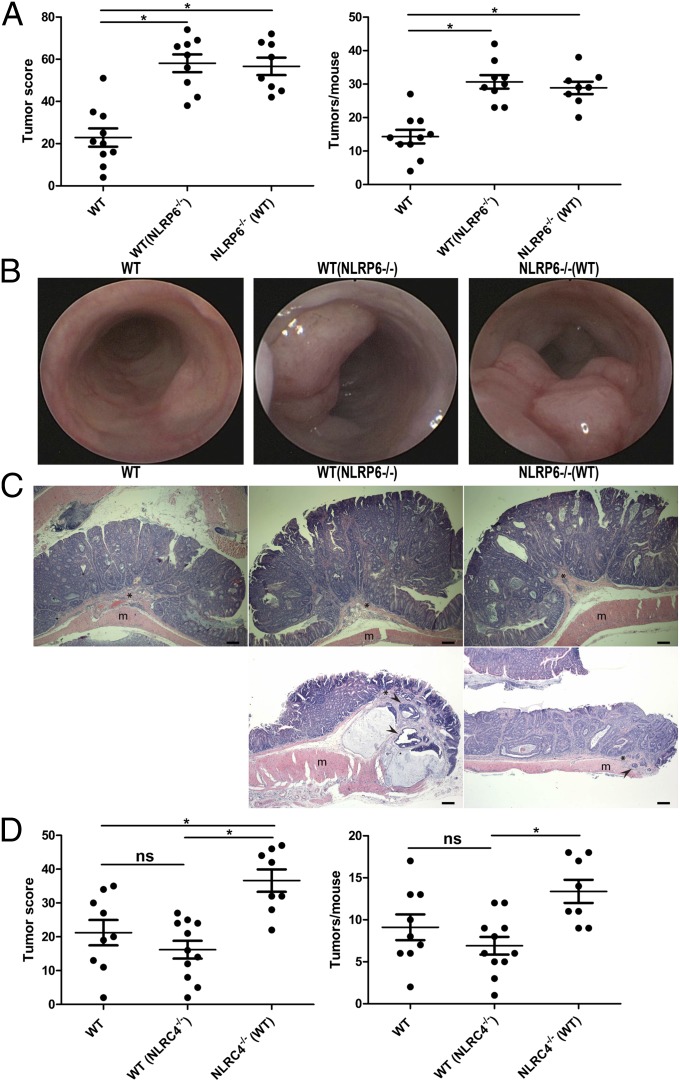Fig. 2.
The increased tumorigenesis in NLRP6−/− mice is transmissible to cohoused WT mice. (A) Tumor score and tumor numbers/mouse in singly housed WT mice, WT mice cohoused with NLRP6−/− mice [designated WT(NLRP6−/−)], and NLRP6−/− mice cohoused with WT mice [designated NLRP6−/−(WT)]. Data are mean ± SEM; n ≥ 8; *P < 0.05 by one-way ANOVA. The experiments were repeated three times. (B) Representative colonoscopic appearance of WT, WT(NLRP6−/−), and NLRP6−/−(WT) mice colon in AOM-DSS-induced CRC. (C) Representative histopathologic sections of colon adenocarcinomas from WT mice, WT(NLRP6−/−) mice, and NLRP6−/−(WT) mice. Invasive tumor foci (arrowhead) were surrounded by abundant amounts of pale blue mucin. *, muscularis mucosae; m, mascularis externa. (Scale bars, 200 µm.) (D) Tumor score and tumor numbers/mouse in singly housed WT mice, WT mice cohoused with NLRC4−/− mice [designated WT(NLRC4−/−)], and NLRC4−/− mice cohoused with WT mice [designated NLRC4−/−(WT)]. Data are mean ± SEM; n ≥ 8; ns, not significant; *P < 0.05 by one-way ANOVA.

